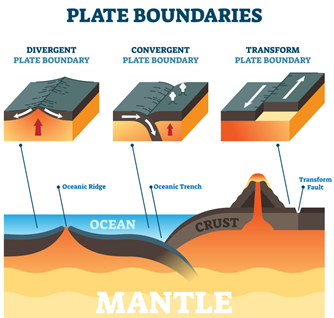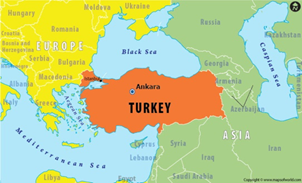

Context
Recently, Turkey witnessed a 7.8 magnitude earthquake which is one of the most powerful earthquakes in the past two decades with more than 1,300 people killed and thousands still believed to be trapped under rubble.
What makes Turkey a hotbed of seismic activity?
- Turkey is frequently shaken by earthquakes.
- Turkey’s proneness to earthquakes comes from its tectonic location.
- Turkey, a hotbed of seismic activity, sits on the Anatolian Plate, which borders two major faults as it grinds northeast against Eurasia.

Tectonic plates:
- The Earth’s outermost layer comprises some 15 major slabs, called tectonic plates.
- The boundaries between these plates are a system of faults – fractures between two blocks of rocks. Any sudden movement along these faults can cause earthquakes.
- The North Anatolian fault traverses the country from west to east, and the East Anatolian fault, rests in the country’s south-eastern region.
- The North Anatolian fault (NAF) line, the meeting point of the Eurasian and Anatolian tectonic plates — is known to be “particularly devastating”.
- The NAF, one of the best-understood fault systems in the world, stretches from the south of Istanbul to north-eastern Turkey and has caused catastrophic earthquakes in the past.
|
About Earthquake:
|
The location:
- Turkey is a country that occupies a unique geographic position, lying partly in Asia and partly in Europe.
- Throughout its history it has acted as both a barrier and a bridge between the two continents.
- Turkey is situated at the crossroads of the Balkans, Caucasus, Middle East, and eastern Mediterranean.
- It is among the larger countries of the region in terms of territory and population, and its land area is greater than that of any European state.
- The country has a north-south extent that ranges from about 300 to 400 miles (480 to 640 km), and it stretches about 1,000 miles from west to east.
- The capital is Ankara, and its largest city and seaport is Istanbul.
|
Turkey is bounded on the north by the Black Sea, on the northeast by Georgia and Armenia, on the east by Azerbaijan and Iran, on the southeast by Iraq and Syria, on the southwest and west by the Mediterranean Sea and the Aegean Sea, and on the northwest by Greece and Bulgaria. |

